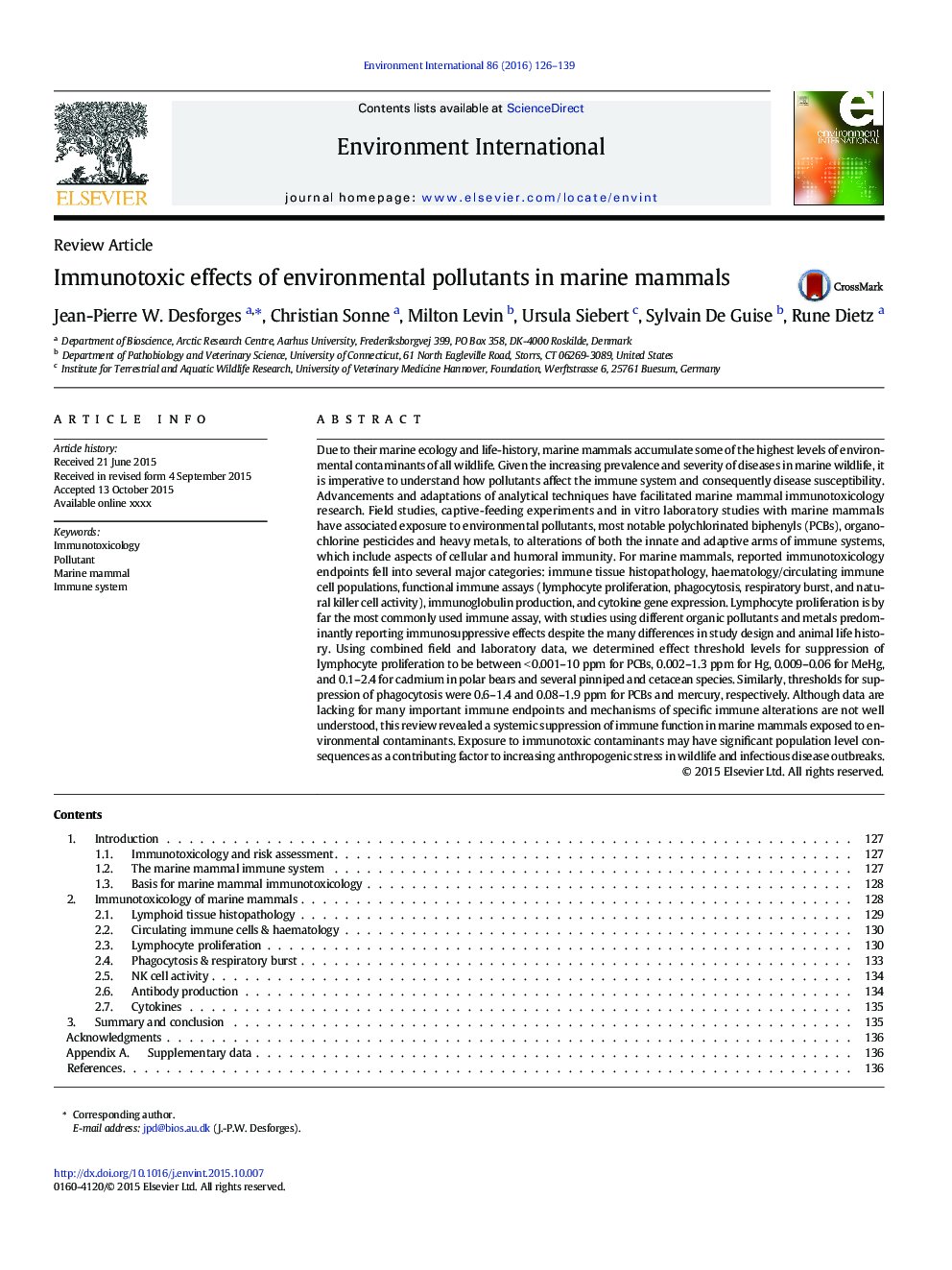| کد مقاله | کد نشریه | سال انتشار | مقاله انگلیسی | نسخه تمام متن |
|---|---|---|---|---|
| 6313536 | 1619042 | 2016 | 14 صفحه PDF | دانلود رایگان |
عنوان انگلیسی مقاله ISI
Immunotoxic effects of environmental pollutants in marine mammals
ترجمه فارسی عنوان
اثرات ایمنی زیستی آلاینده های محیطی در پستانداران دریایی
دانلود مقاله + سفارش ترجمه
دانلود مقاله ISI انگلیسی
رایگان برای ایرانیان
کلمات کلیدی
سم شناسی ایمنی آلودگی پستاندار دریایی، سیستم ایمنی،
موضوعات مرتبط
علوم زیستی و بیوفناوری
علوم محیط زیست
شیمی زیست محیطی
چکیده انگلیسی
Due to their marine ecology and life-history, marine mammals accumulate some of the highest levels of environmental contaminants of all wildlife. Given the increasing prevalence and severity of diseases in marine wildlife, it is imperative to understand how pollutants affect the immune system and consequently disease susceptibility. Advancements and adaptations of analytical techniques have facilitated marine mammal immunotoxicology research. Field studies, captive-feeding experiments and in vitro laboratory studies with marine mammals have associated exposure to environmental pollutants, most notable polychlorinated biphenyls (PCBs), organochlorine pesticides and heavy metals, to alterations of both the innate and adaptive arms of immune systems, which include aspects of cellular and humoral immunity. For marine mammals, reported immunotoxicology endpoints fell into several major categories: immune tissue histopathology, haematology/circulating immune cell populations, functional immune assays (lymphocyte proliferation, phagocytosis, respiratory burst, and natural killer cell activity), immunoglobulin production, and cytokine gene expression. Lymphocyte proliferation is by far the most commonly used immune assay, with studies using different organic pollutants and metals predominantly reporting immunosuppressive effects despite the many differences in study design and animal life history. Using combined field and laboratory data, we determined effect threshold levels for suppression of lymphocyte proliferation to be between <Â 0.001-10Â ppm for PCBs, 0.002-1.3Â ppm for Hg, 0.009-0.06 for MeHg, and 0.1-2.4 for cadmium in polar bears and several pinniped and cetacean species. Similarly, thresholds for suppression of phagocytosis were 0.6-1.4 and 0.08-1.9Â ppm for PCBs and mercury, respectively. Although data are lacking for many important immune endpoints and mechanisms of specific immune alterations are not well understood, this review revealed a systemic suppression of immune function in marine mammals exposed to environmental contaminants. Exposure to immunotoxic contaminants may have significant population level consequences as a contributing factor to increasing anthropogenic stress in wildlife and infectious disease outbreaks.
ناشر
Database: Elsevier - ScienceDirect (ساینس دایرکت)
Journal: Environment International - Volume 86, January 2016, Pages 126-139
Journal: Environment International - Volume 86, January 2016, Pages 126-139
نویسندگان
Jean-Pierre W. Desforges, Christian Sonne, Milton Levin, Ursula Siebert, Sylvain De Guise, Rune Dietz,
